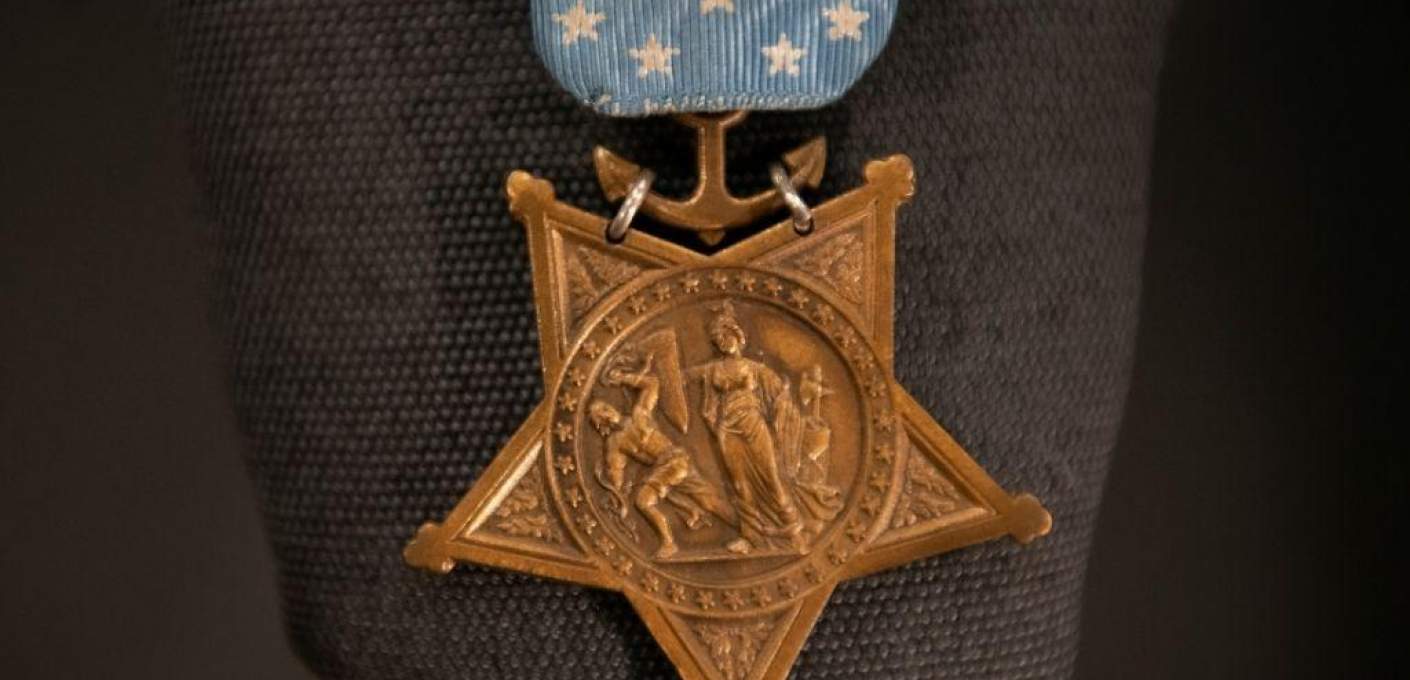
Permanent Exhibit
Medal of Honor Exhibit
This exhibit is a part of our permanent collection and can be seen with our General Admission tickets.
Overview
The first official means for rewarding individual bravery in the U.S.military was designated by General George Washington in 1782. Created to recognize “any singularly meritorious action,” records show that it was awarded to only three men. It was called the Badge of Military Merit and it fell out of use after the Revolutionary War.
During the Mexican-American War, a “certificate of merit” was created for soldiers whose valor in action was recognized. In the early years of the Civil War, a medal of valor was proposed but the Army General-in-Chief Winfield Scott rejected the idea. However, the Navy did support such a medal and on December 9, 1861, Senator James Grimes, Chairman of the Committee on Naval Affairs proposed an award that became the Medal of Honor to the Senate. It became law on December 21. In July of 1862, a similar resolution on behalf of the Army was passed. At the time, these medals were created to decorate those who served in the Civil War. In 1863, the Medal of Honor was made a permanent decoration by Congress.
On behalf of Congress, the President of the United States presents the awards to recipients. To date, more than 3500 Medals of Honor have been awarded to those in all branches of the military – the Army, Navy, Marines, Air Force, and Coast Guard. Each branch has its own design of its Medal of Honor.
The Medal of Honor on display at the National Museum of the Pacific War was earned posthumously by Marine Staff Sergeant William J. Bordelon for his valiant actions on November 20, 1943. His citation reads:
“For valorous and gallant conduct above and beyond the call of duty as a member of an assault engineer platoon of the 1st Battalion, 18th Marines, tactically attached to the 2d Marine Division, in action against the Japanese-held atoll of Tarawa in the Gilbert Islands, 20 November 1943. Landing in the assault waves under withering enemy fire which killed all but four of the men in his tractor, SSgt. Bordelon hurriedly made demolition charges and personally put two pillboxes out of action. Hit by enemy machine-gun fire just as a charge exploded in his hand while assaulting a third position, he courageously remained in action and, although out of demolition, provided himself with a rifle and furnished fire coverage for a group of men scaling the seawall. Disregarding his own serious condition, he unhesitatingly went to the aid of one of his demolition men, wounded and calling for help in the water, rescuing this man and another who had been hit by enemy fire while attempting to make the rescue. Still refusing first aid for himself, he again made up demolition charges and singlehandedly assaulted a fourth Japanese machine-gun position but was instantly killed when caught in a final burst of fire from the enemy. SSgt. Bordelon's great personal valor during a critical phase of securing the limited beachhead was a contributing factor in the ultimate occupation of the island, and his heroic determination throughout three days of violent battle reflects the highest credit upon the U.S. Naval Service. He gallantly gave his life for his country.”

Medal of Honor recipient Carmen Bordelon, photo by William Bordelon



